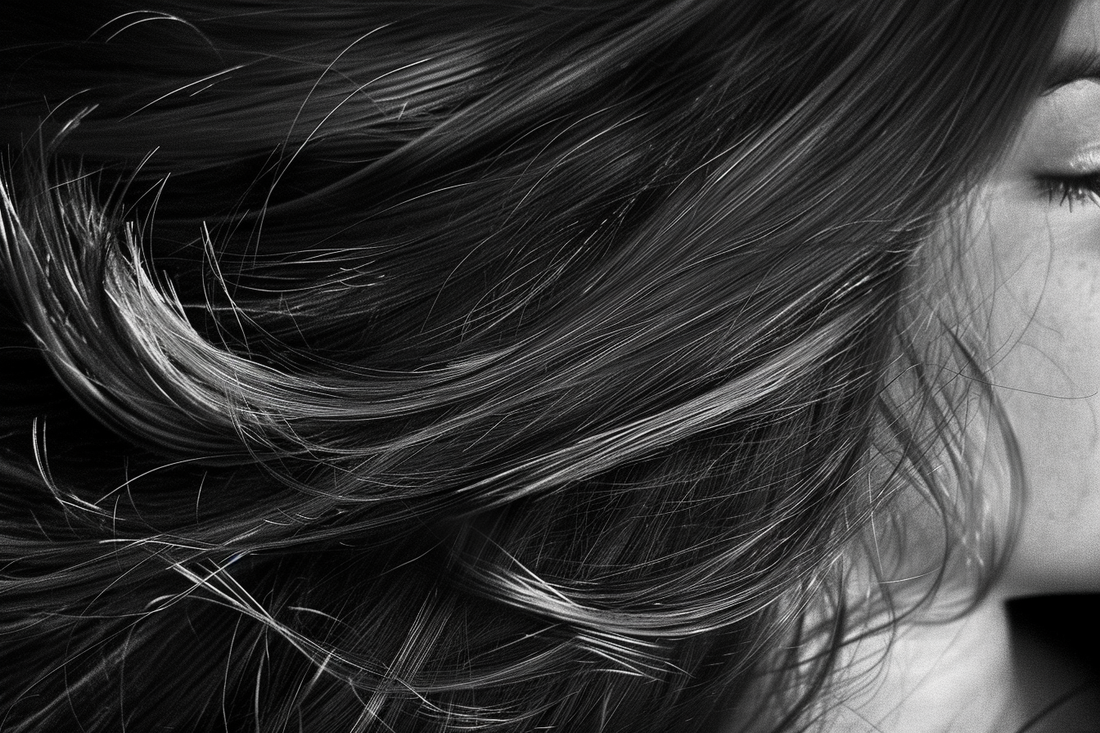
A Gentle Reminder: Your Hair’s Silent Cry for Help
Split ends are often the whisper that turns into the shout of hair health concerns. You've probably wondered how to stop your strands from breaking. Split ends and hair breakage not only ruin the appearance of your locks but signal deeper damage waiting to worsen.
Addressing these common issues means you'll enjoy stronger, smoother, and healthier hair while avoiding costly salon fixes. Whether you're short on time, resources, or skills, this guide walks you through everything in simple, actionable steps.
Expect to learn why split ends occur, how to prevent them, and ways to treat existing damage effectively. From natural remedies to practical maintenance, discover proven solutions tailored to your daily routine. With minimal effort, you can achieve lasting results—and yes, healthier hair awaits you.
Loading...
How to Prevent and Treat Split Ends and Hair Breakage
Prerequisites
- Materials Needed: Wide-tooth comb, sulfate-free shampoo, conditioner, microfiber towel, plant-based oils (e.g., coconut oil or argan oil), and satin or silk pillowcase.
- Skill Level: Beginner
- Time Commitment: 15–30 minutes for daily or weekly hair care routines.
- Safety Considerations: Patch test new products to check for allergies or irritation.
- Workspace Setup Needs: Clean space near a mirror with access to water and your hair products.
Preparation Phase
- Detangle your hair gently with a wide-tooth comb before washing.
- Gather all the required materials to streamline your hair care routine.
- Ensure you work with lukewarm water to avoid stripping natural oils from your hair.
Main Instructional Content
Step 1: Understand the Causes
Split ends occur when the protective outer layer of your hair—known as the cuticle—is worn down due to heat, chemical treatments, or dryness. Hair breakage usually stems from similar issues, combined with rough handling, insufficient moisture, or environmental stressors like UV rays and humidity.
Step 2: Improve Washing Practices
Use a sulfate-free shampoo and a hydrating conditioner. Limit washing your hair to 2–3 times a week to maintain its natural oils. Always rinse with cool water at the end of your shower to seal the hair cuticle and lock in moisture.
Step 3: Condition and Hydrate
Apply deep conditioning treatments or hair masks weekly to strengthen and moisturize your strands. Ingredients like avocado, honey, and olive oil are excellent options. Leave the treatment on for 20–30 minutes for best results.
Step 4: Protect Hair from Heat
Minimize the use of heat-styling tools like flat irons or curling wands. Use a thermal protectant spray when styling is necessary. Opt for air-drying whenever possible instead of using a blow dryer.
Step 5: Choose Gentle Hair Accessories
Switch to silk or satin scrunchies and pillowcases to reduce friction and split ends. Avoid tight hairstyles that add strain to your hair.
Step 6: Regular Maintenance
Trim your hair every 6–8 weeks to remove split ends and prevent them from traveling up the hair shaft. Regular trims are key to maintaining healthy-looking locks.
Step 7: Incorporate Hair-Strengthening Nutrients
Ensure your diet includes protein, biotin, omega-3 fatty acids, and vitamins A, C, and E. These nutrients are essential for improving hair strength and elasticity.
Step 8: Practice Nighttime Hair Care
Wrap your hair in a silk scarf or sleep on a satin pillowcase to prevent tangling and breakage caused by friction while you sleep. Consider braiding your hair loosely before bed.
Troubleshooting Guide
Common Issues
- Dry Hair: Increase hydration by using leave-in conditioners or applying oils like argan or coconut oil to the ends of your hair.
- Persistent Split Ends: Schedule trims more frequently or seek professional advice if damage is extensive.
- Knots and Tangles: Use a detangling spray or leave-in conditioner and work gently through knots with a wide-tooth comb.
Prevention Tips
- Wear a hat or use a protective product when exposed to the sun for long periods.
- Avoid skipping protective rinses after swimming in chlorinated or salty water.
- Reassess your diet if your hair appears brittle or lacks growth, as nutritional deficiencies may be contributing.
Warning Signs to Watch For
- Hair feels excessively dry despite regular conditioning treatments.
- Breakage occurs even with minimal brushing or styling.
- Hair tangles often and loses shine, indicating a potential loss of moisture or structural integrity.
Enhancement Section
Expert Tips for Better Results
- Massage your scalp regularly to stimulate blood circulation and promote healthy hair growth.
- Rotate between protein-based and moisture-focused treatments to balance strength and flexibility.
Variations for Different Hair Types
- Fine Hair: Use lightweight products to avoid weighing down your strands.
- Curly Hair: Apply extra conditioner to the ends and avoid shampooing too frequently.
- Thick Hair: Opt for weekly deep treatments to prevent dryness.
Advanced Techniques
- Use a steam treatment after applying deep conditioner to enhance absorption.
- Incorporate a scalp scrub once a month to remove buildup and improve nutrient delivery.
Final Steps for Healthier Hair
By following these strategies, you can effectively prevent split ends and minimize hair breakage over time.
Regular trims, gentle detangling, and adopting a consistent hair care routine remain key for maintaining strong hair.
- Incorporate weekly deep conditioning treatments with natural ingredients for enhanced moisture retention and repair.
- Choose sulfate-free shampoos and avoid over-washing to protect your hair's natural oils.
- Reduce heat styling and switch to protective hairstyles for better long-term results.
Proper nighttime care, such as using satin pillowcases or silk scarves, prevents unnecessary damage and improves hair health.
Nourish your hair from within by consuming nutrient-rich foods, including proteins, biotin, and omega-3 fatty acids.
These tips not only help you prevent common issues but also promote stronger, healthier hair with lasting improvements.
Citations:
https://juicychemistry.com/blogs/hair-care/hair-breakage-causes-types-repair-and-prevention https://us.davines.com/blogs/news/how-to-prevent-split-ends https://www.youtube.com/watch?v=rC4xA7t2uJw https://www.healthline.com/health/how-to-prevent-split-ends https://www.johnfrieda.com/en-uk/blog/hair-care/how-to-prevent-split-ends/, https://www.healthline.com/health/beauty-skin-care/split-ends https://www.byrdie.com/how-to-prevent-split-ends https://www.allure.com/story/how-to-prevent-split-ends.©copyright 2024,Valentia Skincare, all rights reserved.










